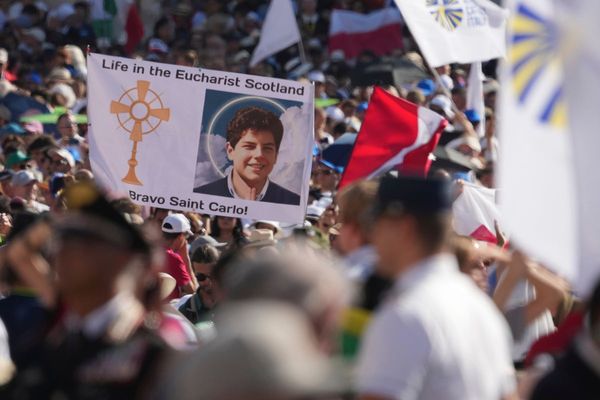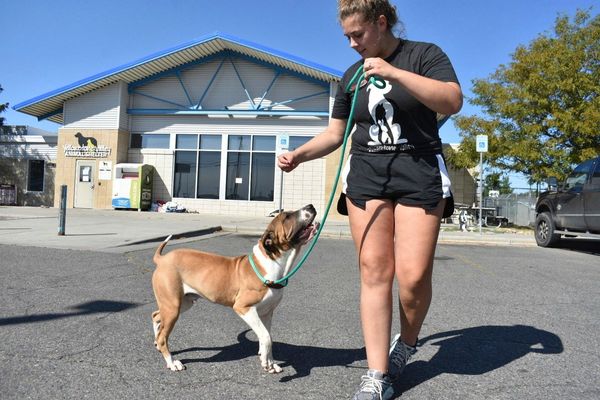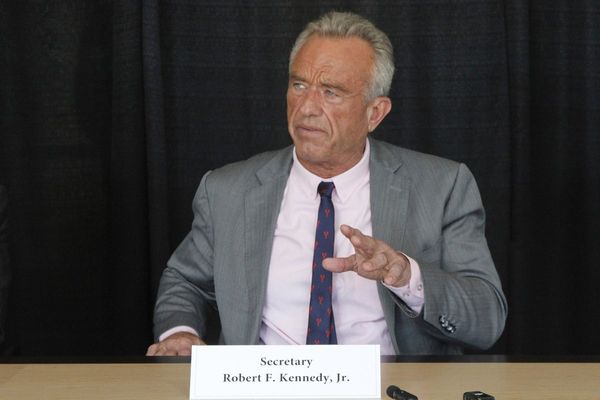What did it sound like in the Bataclan concert hall when three terrorists machine-gunned the crowd at a rock concert on 13 November 2015? And what did it look like once the injured had been taken out, leaving only those who were beyond help? Those present in the special criminal court found out on Friday. It was frightful.
We were warned.
What we were about to see and hear was extremely violent. Those who wished to leave could do so. The web radio service which normally links victims and survivors directly to the courtroom was cut. The psychological support service is available, exceptionally, all this weekend. We were reminded of the emergency number.
Then we were given another warning.
Any attempt to copy the sound or images provided by the court would result in immediate expulsion. Criminal proceedings would be launched against those found breaking the embargo. Phones, microphones and cameras were to be switched off and put away.
The main courtroom at the Paris special criminal tribunal was full to capacity on Friday, attendance boosted by an unusually large number of survivors and the bereaved. The hearing opened with the playing of three audio recordings made during the Bataclan assault. And the court was then shown 20 of the photographs taken by police forensic experts immediately after the attack.
The demand for this special "presentation" of evidence was spearheaded by the victim support association Life for Paris. They argued that the aseptic approach so far favoured by tribunal president Jean-Louis Périès risks concealing the raw truth at the heart of this trial: 131 people lost their lives in the Paris November attacks in atrocious circumstances.
No one wants to glorify the violence. But no one should be allowed forget it either.
Screams and machine-gun fire
The sounds were the worst.
We heard less than 10 minutes selected from the two-and-a-half hours recorded by a dictaphone dropped on the Bataclan floor as the attack began.
The first extract coincides with the start of the assault and begins with a few bars of rock music, the Eagles of Death Metal in full flight. Then there are several distant loud cracks. "Like fireworks," as so many survivors testified.
The music becomes disjointed, ruined by feedback. There are screams, shouts. More cracking noises and then a burst of what is unmistakably, incredibly, machine-gun fire — several kalashnikovs raining death on the packed crowd of 1,500. There are more screams. Confusion.
The second audio track is very short, and not very clear. It marks the moment when the two surviving killers begin to move their hostages along the first-floor balcony.
The words "hostages" and "police chief" are shouted, but there is no gunfire.
- A day of disruption, sadness and rage as Bataclan survivors continue to testify
- Bataclan murders: a mother remembers the day the sun went out
And then there is the recording of the final assault by members of the police special intervention brigade.
There are shouted orders, presumably from the terrorists, some followed by ominous single shots. Then more gunfire, the deep resonance of stun grenades, shouts of "Allez, allez, allez!" as the police team advances down the narrow corridor towards the room in which the terrorists and their hostages are held.
Someone yells "there are hostages!" There are counter cries, indistinct. A loud, clear voice is heard giving orders. More stun grenades. A woman screams as shots are fired. Someone says "be careful guys". There is confusion, and then, very clearly "they're all down".
The eleven hostages were saved.
Bodies, and more bodies
The sequence of photographs begins, deceptively, with a series of shots of the street outside the Bataclan, dark and deserted as you would expect at 5.30AM on a November Saturday morning. Except that there are piles of broken glass and discarded belongings on the footpath.
Then we move inside, to the bar area, where a pair of feet wearing orange-soled sneakers can be seen. That's the first body.
Accompanied by the calm commentary provided by Jean-Louis Périès for the web radio audience, now back on-line, we tour the entire scene of desolation.
Bodies in piles on the main floor. On the first-floor balcony. Smeared trails of blood from the injured who were evacuated earier. A confused pile of soiled rags at the bottom of some steps. "The remains of suicide bomber Foued Mohamed Agad," president Périès explains.
Life for Paris selected 50 images from the hundreds taken by police investigators. Jean-Louis Périès whittled that down to 20. It was still too many.
The trial continues.
- In the midst of the horror, Bataclan heroism has its golden moment
- Bitter testimony from the Bataclan's forgotten police heroes
Click here to follow Michael Fizpatrick's full coverage of the Paris Attacks trial.







